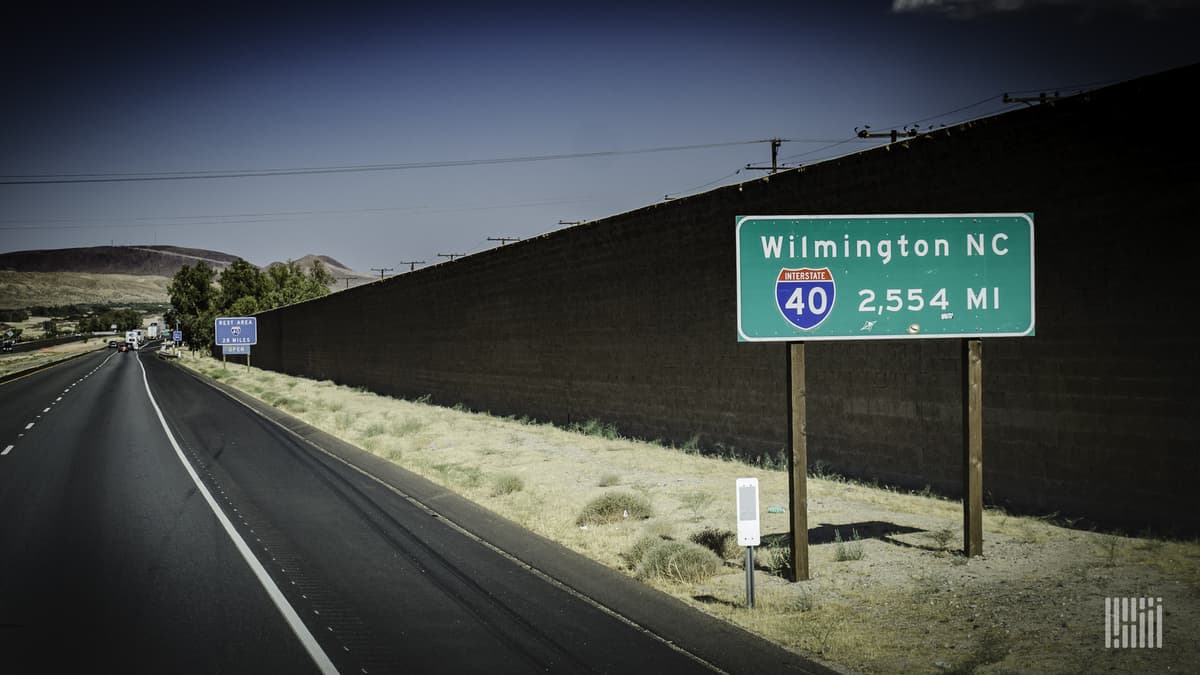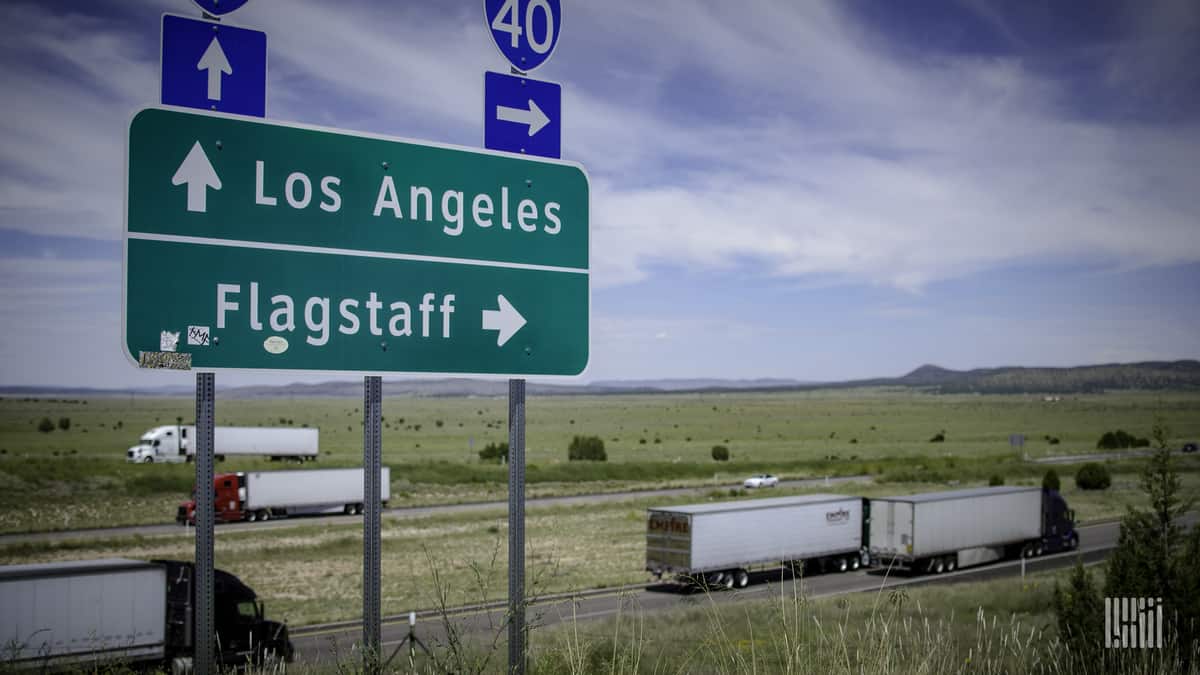The views expressed here are solely those of the author and do not necessarily represent the views of FreightWaves or its affiliates.
A huge amount of attention has been focused on supply chain operations by the COVID-19 pandemic, revealing both the best and worst of distribution strategies. Whether fighting a daily battle to reformulate distribution of essential supplies, or coping with the anxiety of ensuring maximum readiness when the country is fully open for business again, there’s never been a better time for businesses to think about why automated route planning will provide an essential advantage going forward.
Route optimization can reduce fleet operating costs by up to 30%, and creates precisely timed delivery plans that improve the customer experience. That sounds like a great deal, but it has to be weighed against the cost, time and potential disruption involved in installing a new technology at the heart of delivery operations. Perhaps recent experience will have tipped the balance, but it’s worth looking at the top reasons that fleet operators, large and small, have taken the leap and embraced automated routing.

(Photo credit: Jim Allen/FreightWaves)
The top 5 triggers that prompt fleet operators to make the jump from manual to software-aided route planning and optimization
Paragon looked back over hundreds of routing software projects, and identified five triggers that stood out. All of them are doubly relevant in the newly fraught world of delivery operations. Perhaps you’ll recognize one or more of these in your own organization.
1. Key routing information is in the minds of very few people
Not long ago, we were contacted by a company whose senior route planner was out sick for two weeks. It took his absence to expose the company’s vulnerabilities as they scrambled to translate daily orders into logical routes. There were no established rules to guide them, and only one conclusion to draw from the experience – “We need to fix this now.”
The fix, of course, is to keep this important information where it belongs – in a system, rather than a single employee’s brain. A large percentage of fleet operators still plan routes manually or with the most basic tools. That means all the data about what makes routes accurate and efficient is in the heads of route planners, and not a system. If those people leave, the data leaves with them, which proves a huge organizational risk.

(Photo: Jim Allen/FreightWaves)
2. No common rules for route planning across the organization
Let’s face it, fleet operations represent a huge cost center, one that gets little organizational love. Sales territories expand, SKUs proliferate, new distribution centers are added, but careful management of fleet operations can be an afterthought. There is often no uniform approach to routing strategy and methodology. As a result, you have multiple operations acting autonomously – throughout a region or even nationwide.
For example, we were called by a building supply company with 200 nationwide locations. The company was building loads daily at each location using a white board. That model wasn’t a strategic choice; it just happened over time. Eventually, they recognized the need for a common system and approach, organization-wide.
3. Fleet operations can’t scale with sales growth
Some companies are experiencing unprecedented growth as a result of the crisis. As businesses add customers and locations, they begin to recognize that planning routes using spreadsheets or rudimentary route planning tools just won’t cut it. Plans that once took three hours now take eight or 10 to construct, due to the added complexity.
But this realization comes at different times for different organizations.
Businesses with foresight get to this point quickly. Others are slow to recognize the signs, assuming that a 15% increase in customer shipments automatically equates to 15% more trucks and drivers. Without careful, system-aided analysis to validate the resource requirements, companies may add more trucks and drivers than they actually need. It’s only when profitability or service levels take a noticeable dip that these businesses recognize the urgent need to change.
Once route planning is automated, highly complex decisions that might otherwise paralyze an organization’s progress become manageable. For instance:
- A window manufacturer that expanded from Virginia to a new distribution center in Florida used routing software to determine how to split the customer base between distribution centers, to minimize delivery costs.
- A national retailer uses the business modeling module of its route optimization software to determine the optimal location for any new distribution center to support store expansion in a region.
You can manage growth, or be managed by it. Most companies prefer the former.

(Photo: Jim Allen/FreightWaves)
4. Unhappiness with current routing software
This trigger point manifests in different ways.
In some cases, companies have simply outgrown their software and are looking for a tool with more advanced functionality.
In other cases, there is frustration that the company’s so-called advanced routing software cannot automate more complex rules without work-arounds. For instance, a restaurant franchisee might want his four locations to be on the same delivery route and delivered in sequence. When the system can’t be configured to automatically manage these and other such routing rules, it becomes a point of frustration.
In still other cases, company dissatisfaction with its route optimization software provider comes down to a simple issue of service. Businesses want to work with knowledgeable consultants who take the time to understand the business in order to ensure that the software can support existing or new processes. Many businesses simply don’t want to adapt long-standing processes that have been working just fine, or miss out on ones that make better sense in a rapidly changing environment, purely because of a software’s limitations.
5. Inability to gauge fleet efficiency
With more pressures than ever on the bottom line organization-wide, fleet operators are under increasing scrutiny to answer questions about their fleet’s performance – but have absolutely no clue how they’re doing.
For route planners and dispatchers at many distribution companies, each day represents a high-stress ride on the same hamster wheel. When it’s a struggle just to get orders out the door, there’s little time to ask “Are my drivers following the established routes?” or “How does our performance stack up against best practice?” or “Are we spending more than we should?”
Business leaders eventually must make the sobering admission that they have little to no visibility of what has clearly been highlighted recently as a core function of the business – distribution. A desire to gain better visibility and control of distribution operations is often what ultimately leads them to seek out a better routing solution.

(Photo: Jim Allen/FreightWaves)
Take note of the symptoms
Those are some of the top trigger points that prompt fleet operators to explore the advantages of automating and improving delivery route planning with advanced routing software. Perhaps recent events have brought some of them to the fore. If so, it’s most likely time to take note of the symptoms of poor performance and act quickly to make the most of automated routing technology.











